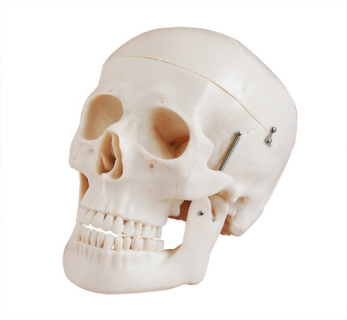Skull models play a crucial role in understanding the perspective and proportions of the bones in the head. The following will explain in detail how skull models can help understand and analyze these complex anatomical structures.

Visual display of head bone structure:
The skull model intuitively shows the complex structure of the head skeleton in the form of three dimensions. From the cranium cerebrum to the cranium facialis, the shape, size and position of each bone are clearly shown. This intuitiveness helps students and doctors grasp the basics of the skeleton of the head more quickly.
Multiple perspectives:
The skull model allows viewing from multiple angles, such as front, side, bottom, etc. This multi-angle observation helps students understand the perspective relationship of the head bones in different perspectives. For example, when viewed from the front, the distribution and proportion of the facial skull can be clearly seen; When viewed from the side, the connection between the cranium and the facial cranium can be better understood.
Understand the perspective principle:
The principle of perspective is the key to understanding the perspective relationship of head bones. The skull model combined with the perspective principle can make students understand the reflection of visual phenomena such as near large and far small, near solid and far empty in the head bones. By observing and comparing skull models at different angles, students gain a deeper understanding of the application of perspective principles in medicine and art.
Analyze the proportional relationship:
There is a certain proportion relationship between the various bones in the skull model, such as "three courts and five eyes". These proportional relationships are crucial to understanding the overall structure and beauty of the bones in the head. By observing and measuring the scale relationships in the skull model, students can more accurately grasp the characteristics and rules of the head bones.
Practical application:
Skull models can be used not only for teaching and academic research, but also for clinical practice and artistic creation. In the medical field, doctors can use skull models for surgical simulation and case analysis; In the field of art creation, artists can make use of skull models to shape and create heads of people. These practical applications further demonstrate the important role of skull models in understanding the perspective and proportions of head bones.
To sum up, the skull model helps students and doctors to deeply understand the relationship between perspective and proportion of head bones through intuitive display, multi-angle observation, understanding of perspective principle, analysis of proportionality and practical application. This understanding not only helps to improve the medical and artistic literacy of students, but also helps to improve the clinical skills of doctors and the creative level of artists.
